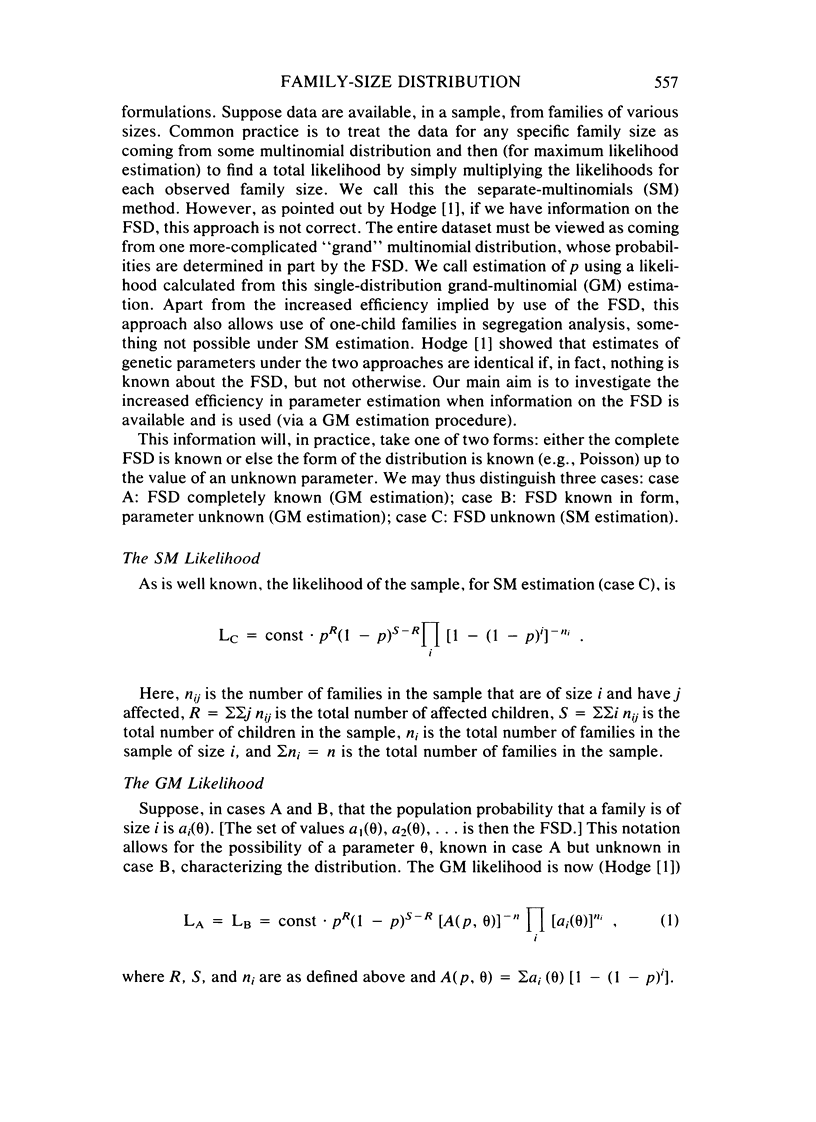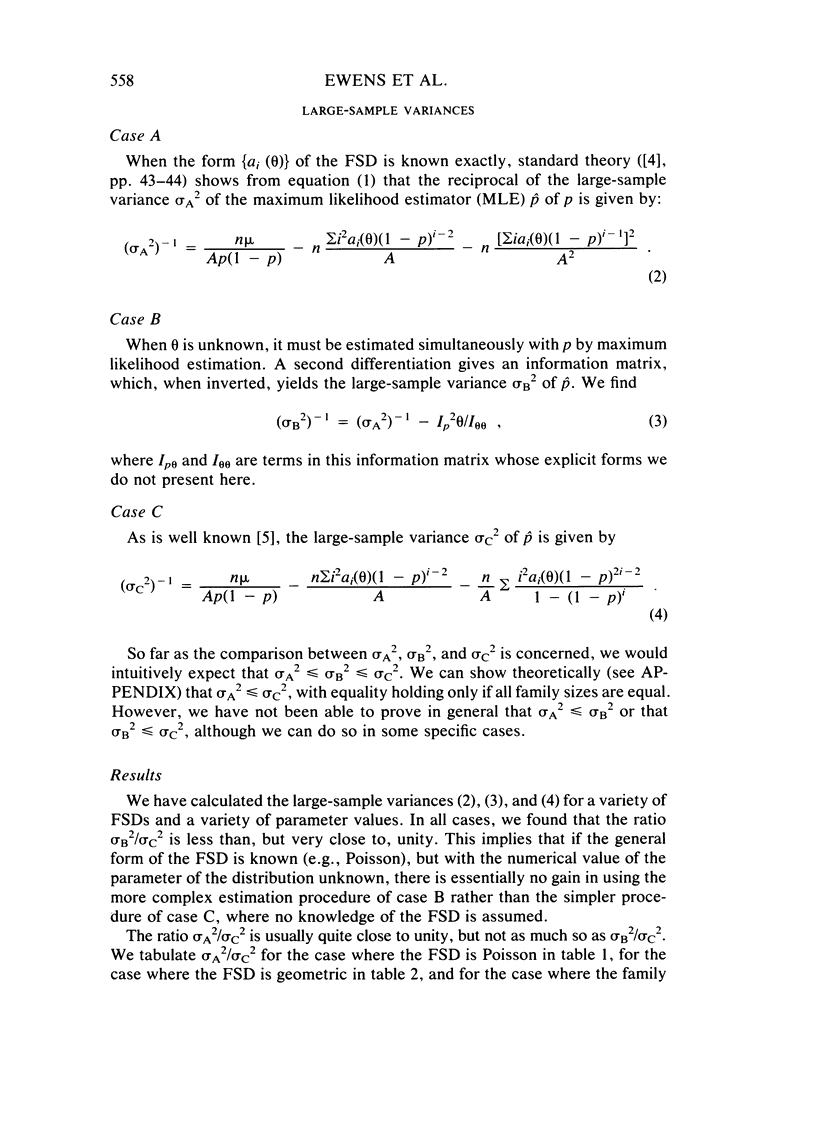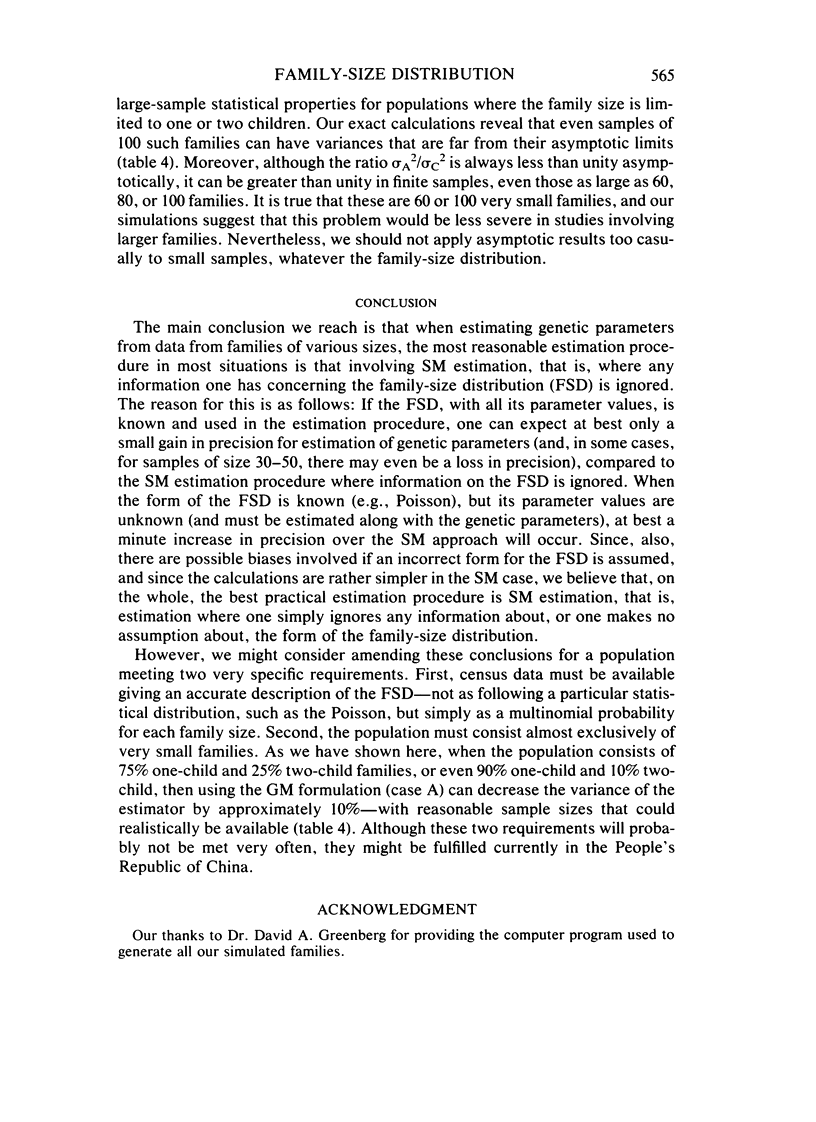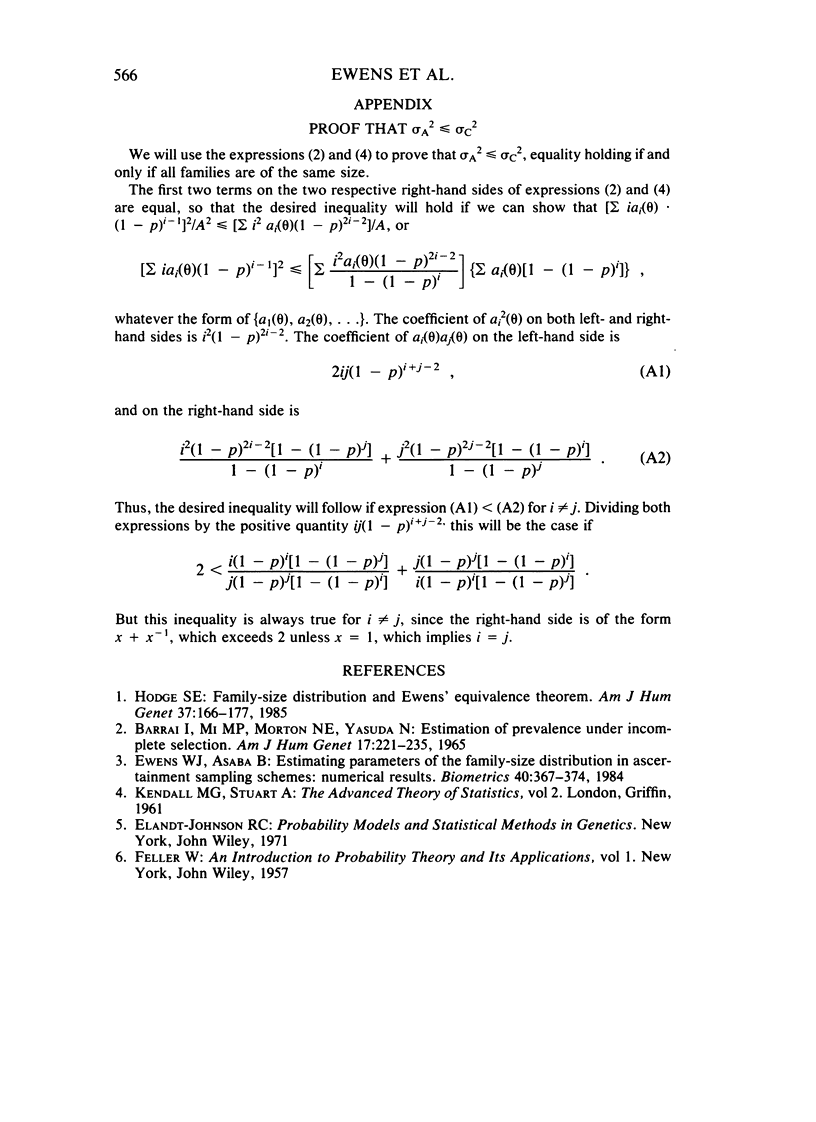Abstract
We consider the question: In a segregation analysis, can knowledge of the family-size distribution (FSD) in the population from which a sample is drawn improve the estimators of genetic parameters? In other words, should one incorporate the population FSD into a segregation analysis if one knows it? If so, then under what circumstances? And how much improvement may result? We examine the variance and bias of the maximum likelihood estimators both asymptotically and in finite samples. We consider Poisson and geometric FSDs, as well as a simple two-valued FSD in which all families in the population have either one or two children. We limit our study to a simple genetic model with truncate selection. We find that if the FSD is completely specified, then the asymptotic variance of the estimator may be reduced by as much as 5%-10%, especially when the FSD is heavily skewed toward small families. Results in small samples are less clear-cut. For some of the simple two-valued FSDs, the variance of the estimator in small samples of one- and two-child families may actually be increased slightly when the FSD is included in the analysis. If one knows only the statistical form of the FSD, but not its parameter, then the estimator is improved only minutely. Our study also underlines the fact that results derived from asymptotic maximum likelihood theory do not necessarily hold in small samples. We conclude that in most practical applications it is not worth incorporating the FSD into a segregation analysis. However, this practice may be justified under special circumstances where the FSD is completely specified, without error, and the population consists overwhelmingly of small families.
Full text
PDF











Selected References
These references are in PubMed. This may not be the complete list of references from this article.
- BARRAI I., MI M. P., MORTON N. E., YASUDA N. ESTIMATION OF PREVALENCE UNDER INCOMPLETE SELECTION. Am J Hum Genet. 1965 May;17:221–236. [PMC free article] [PubMed] [Google Scholar]
- Ewens W. J., Asaba B. Estimating parameters of the family-size distribution in ascertainment sampling schemes: numerical results. Biometrics. 1984 Jun;40(2):367–374. [PubMed] [Google Scholar]
- Hodge S. E. Family-size distribution and Ewens' equivalence theorem. Am J Hum Genet. 1985 Jan;37(1):166–177. [PMC free article] [PubMed] [Google Scholar]


